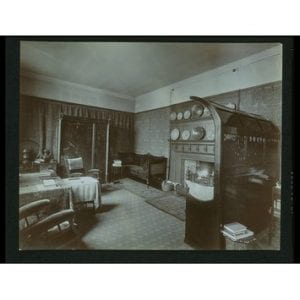Journal 3

After seeing the photo of the Red House, I immediately recalled the section I read from Rethinking the Interior. The image shown above is the drawing room at the Kelmscott House.
This image was important when describing the design of the house because everything in the house needed to be either of the two aspects; useful or beautiful. And I agree to this idea of it having to be either of those because space can alter a person’s mood or emotion which makes it livable or not. It’s interesting the way they are able to consider the many different aspects in how a placement, item, or color can instantly change the mood of the room. For example, this image specifically displays furniture that is necessary. The idea of not having any unnecessary furniture like occasional tables, chairs, etc, makes this space feel comfortable. The drawing room being the place where everyday activities are being carried out should be a place where someone who enters the room can understand the practical functions. Another aspect are the windows reflects natural light into this space. Even if the windows are not seen in this image, there is noticeable natural light. This supports the idea of how color can be a major factor when it comes to aura. It’s important to keep elements from the outside world. It doesn’t keep the room isolated as it further expands itself with its space and environment. The walls — the walls were not meant to have any art or photographs of any sort because it becomes a ‘broken wall-surface’. This statement in the book made me understand how not only furniture can affect the rooms overall mood but the wall and its design. Through this, I’m able to conclude that everyone has their own interpretation and opinion in design. Not everyone can perceive the intended meaning.